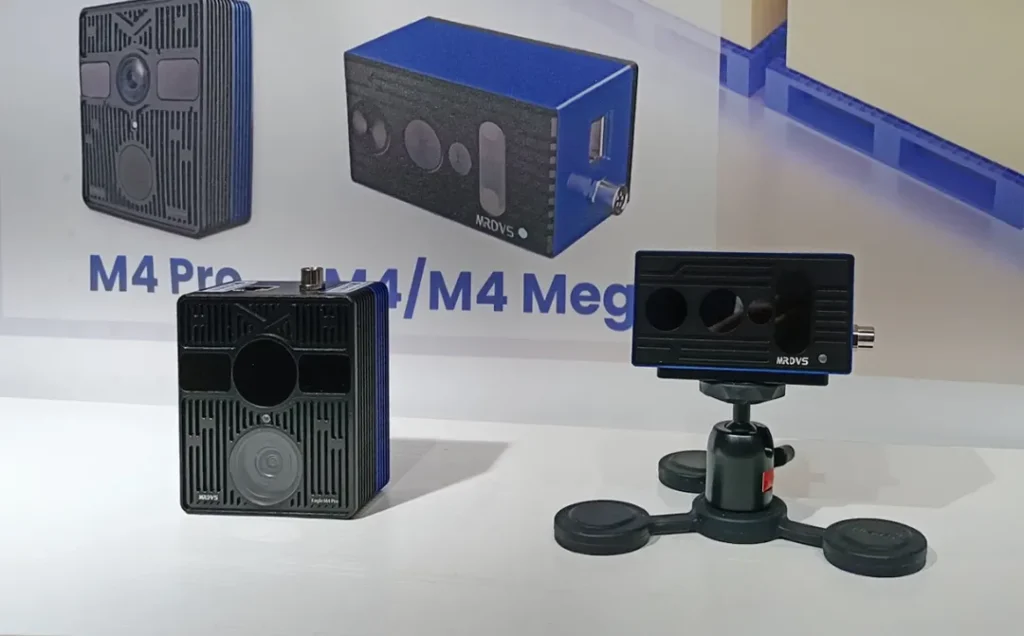
Obstacle avoidance sensors are important in the rapidly evolving field of robotics, and mobile robots are increasingly deployed across various industries, from warehousing and logistics to healthcare and service sectors. A critical component of their functionality is the ability to navigate environments safely and efficiently, which hinges on effective obstacle avoidance systems. These systems rely on sophisticated sensors to detect and respond to obstacles, ensuring seamless operation. MRDVS, a leader in advanced vision technology, offers a range of solutions tailored to enhance mobile robot navigation.
Obstacle avoidance sensors are pivotal in enabling robots to perceive and interact with their surroundings. The primary categories include:

Ultrasonic Sensors: These sensors emit ultrasonic waves and measure the time it takes for the echoes to return, calculating the distance to objects. They are cost-effective and simple but can struggle with accuracy and may produce false positives, especially in complex environments.
Infrared Sensors: Utilizing infrared light to detect objects, these sensors are effective at short ranges and in controlled lighting conditions. However, they can be affected by ambient light and reflective surfaces, limiting their reliability in diverse settings.
LiDAR (Light Detection and Ranging): LiDAR systems use laser beams to create high-resolution maps of the environment. They offer precise distance measurements and are effective in various lighting conditions but tend to be more expensive and can be affected by reflective surfaces and environmental conditions like rain or dust.
Camera-Based Systems: These systems capture visual data to identify and classify obstacles. They include:
MRDVS stands at the forefront of developing cutting-edge vision systems that empower mobile robots with superior obstacle avoidance capabilities. MRDVS S Series Obstacle Avoidance Robot Cameras are designed to provide comprehensive environmental perception, delivering robust solutions for mobile robot applications.
Multimodal Data Fusion: Combining RGB and depth data enhances robot perception, enabling accurate navigation in complex environments.
Seamless Integration: Easily integrate with existing robot control systems via I/O interface, allowing for customization of avoidance parameters.
Object Semantic Recognition: Identifies and classifies objects within the robot’s environment, enabling mobile robots to make informed decisions to navigate around obstacles.
The S2 Max, featuring the advanced Sony IMX570 iToF sensor and registered RGB-D imaging, stands out in the S series. It offers a depth resolution of 320×240 at up to 15 fps and a comprehensive field of view of 81° x 61°. Utilizing 940nm VCSEL illumination, the S2 Max ensures safe and efficient depth perception. Its capability to output depth, RGB, and amplitude maps makes it ideal for obstacle avoidance in mobile robots
Enhanced Safety: By providing accurate and real-time obstacle detection, MRDVS’s cameras significantly reduce the risk of collisions, ensuring safer operations.
Operational Efficiency: The advanced perception capabilities enable robots to navigate complex environments more efficiently, reducing downtime and increasing productivity.
Cost-Effectiveness: MRDVS offers top-notch Time-of-Flight and structured light industrial cameras for reliable integration, providing a cost-effective solution for many applications.
As mobile robots become integral to various industries, the importance of effective obstacle avoidance systems cannot be overstated. MRDVS’s advanced vision solutions, particularly the S Series Obstacle Avoidance Robot Cameras, provide the necessary tools to enhance safety, efficiency, and reliability in robotic operations. By integrating these cutting-edge technologies, businesses can ensure their robotic systems are equipped to navigate the complexities of real-world environments with precision and confidence.
©Copyright 2023 Zhejiang MRDVS Technology Co.,Ltd.
浙ICP备2023021387号-1